Abstract
Pseudomonas fluorescens 2-79 and P. aureofaciens 30-84 produce the antibiotic phenazine-1-carboxylic acid and suppress take-all, an important root disease of wheat caused by Gaeumannomyces graminis var. tritici. To determine whether the antibiotic is produced in situ, wheat seeds were treated with strain 2-79 or 30-84 or with phenazine-nonproducing mutants or were left untreated and then were sown in natural or steamed soil in the field or growth chamber. The antibiotic was isolated only from roots of wheat colonized by strain 2-79 or 30-84 in both growth chamber and field studies. No antibiotic was recovered from the roots of seedlings grown from seeds treated with phenazine-nonproducing mutants or left untreated. In natural soils, comparable amounts of antibiotic (27 to 43 ng/g of root with adhering soil) were recovered from roots colonized by strain 2-79 whether or not the pathogen was present. Roots of plants grown in steamed soil yielded larger bacterial populations and more antibiotic than roots from natural soils. In steamed and natural soils, roots from which the antibiotic was recovered had significantly less disease than roots with no antibiotic, indicating that suppression of take-all is related directly to the presence of the antibiotic in the rhizosphere.
Full text
PDF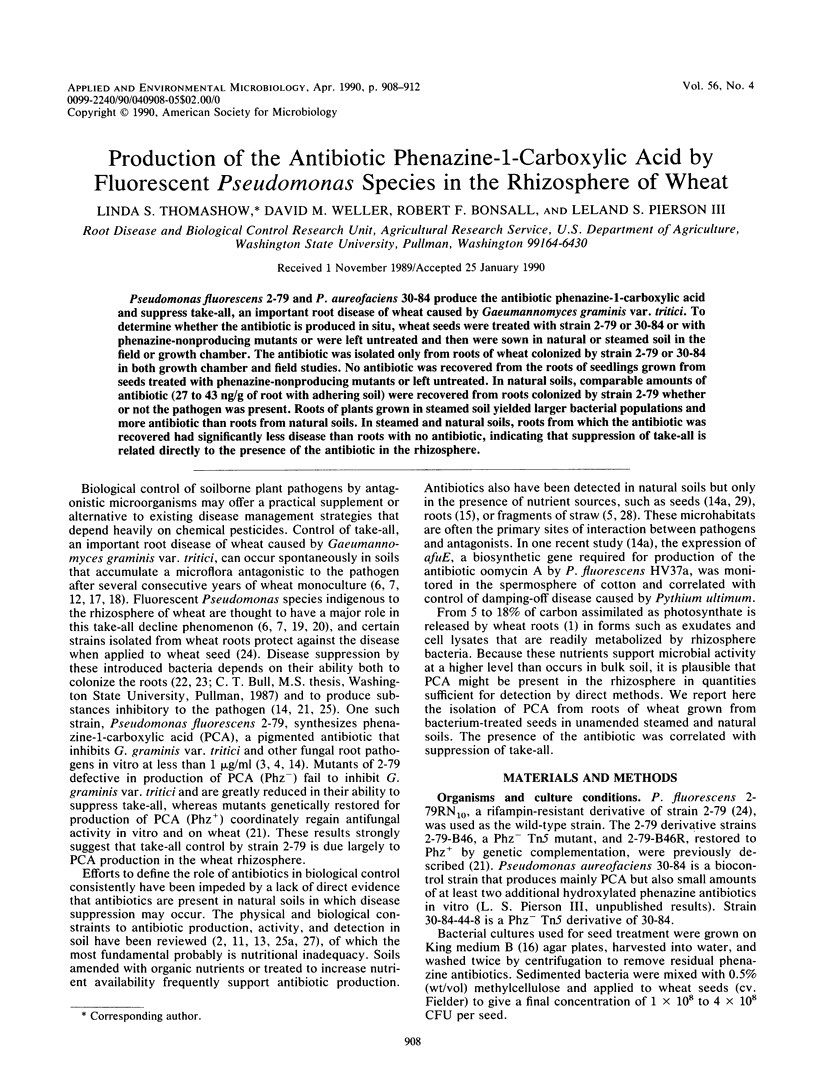
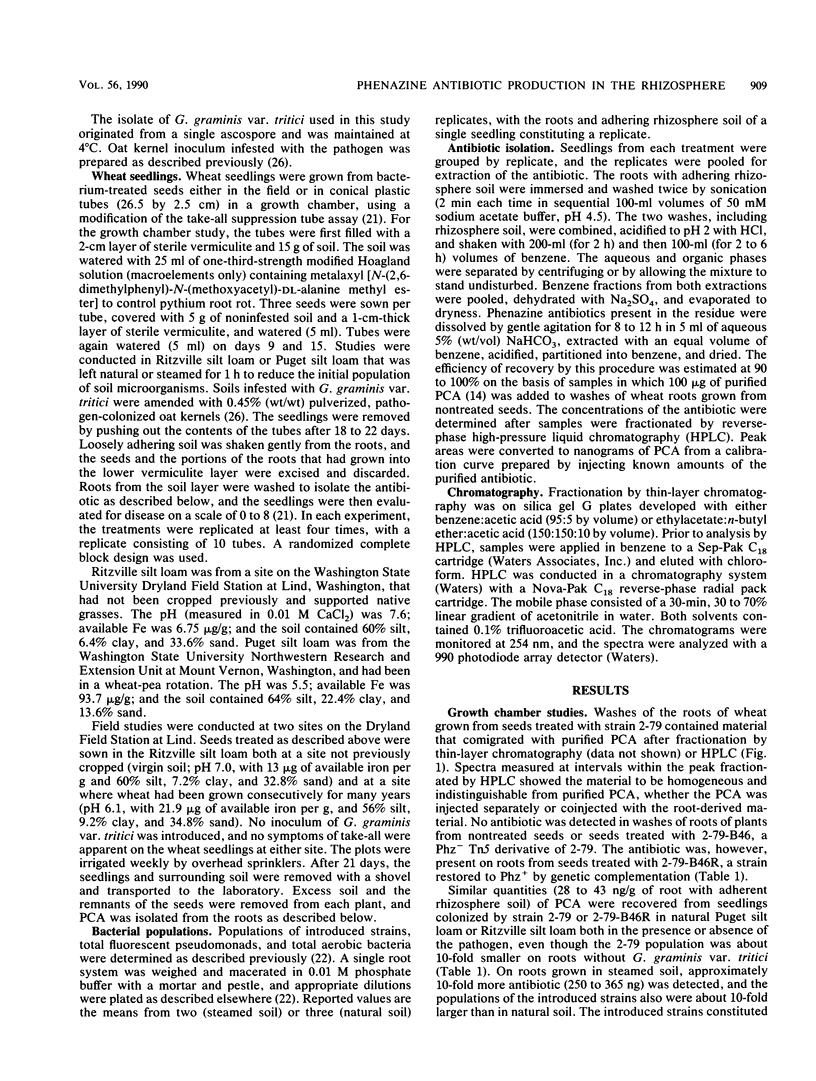
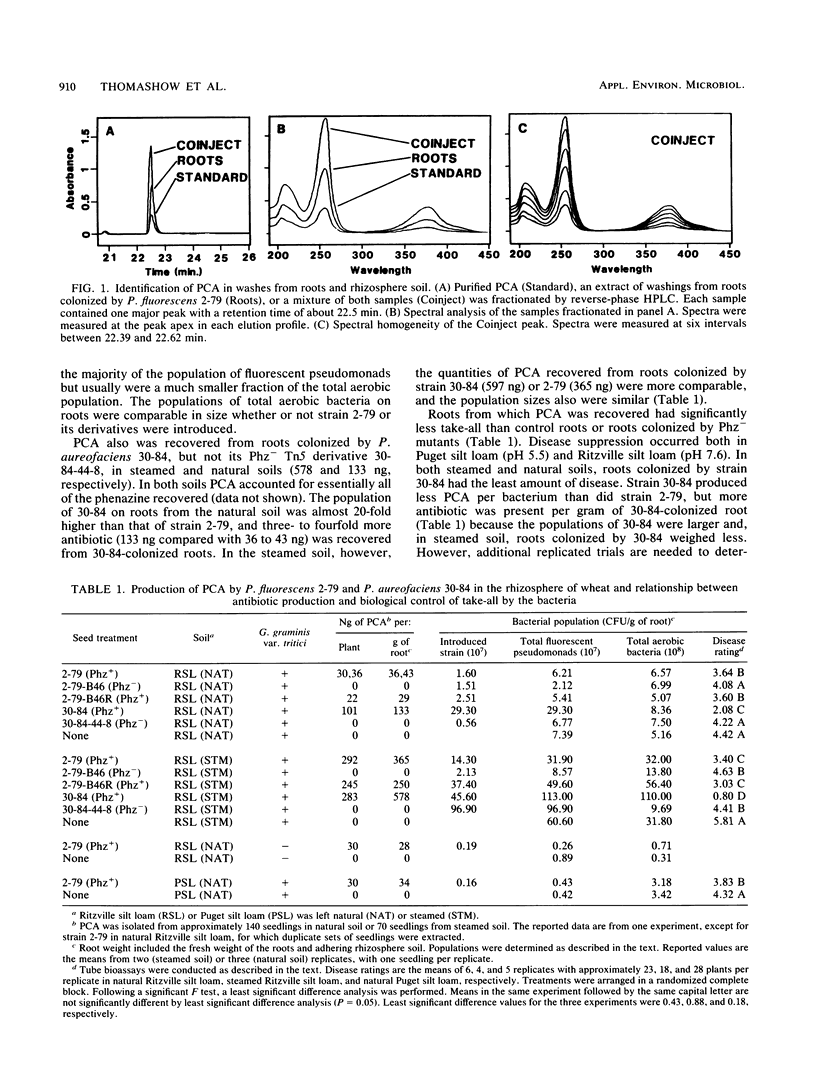
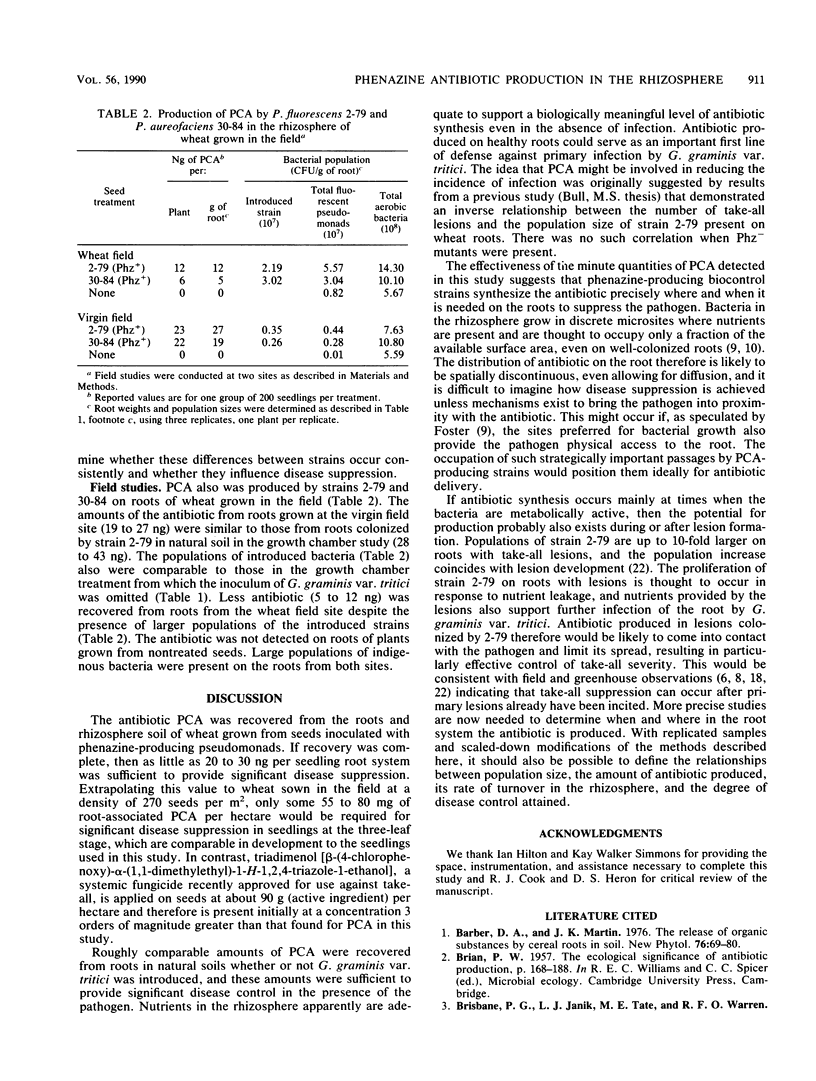
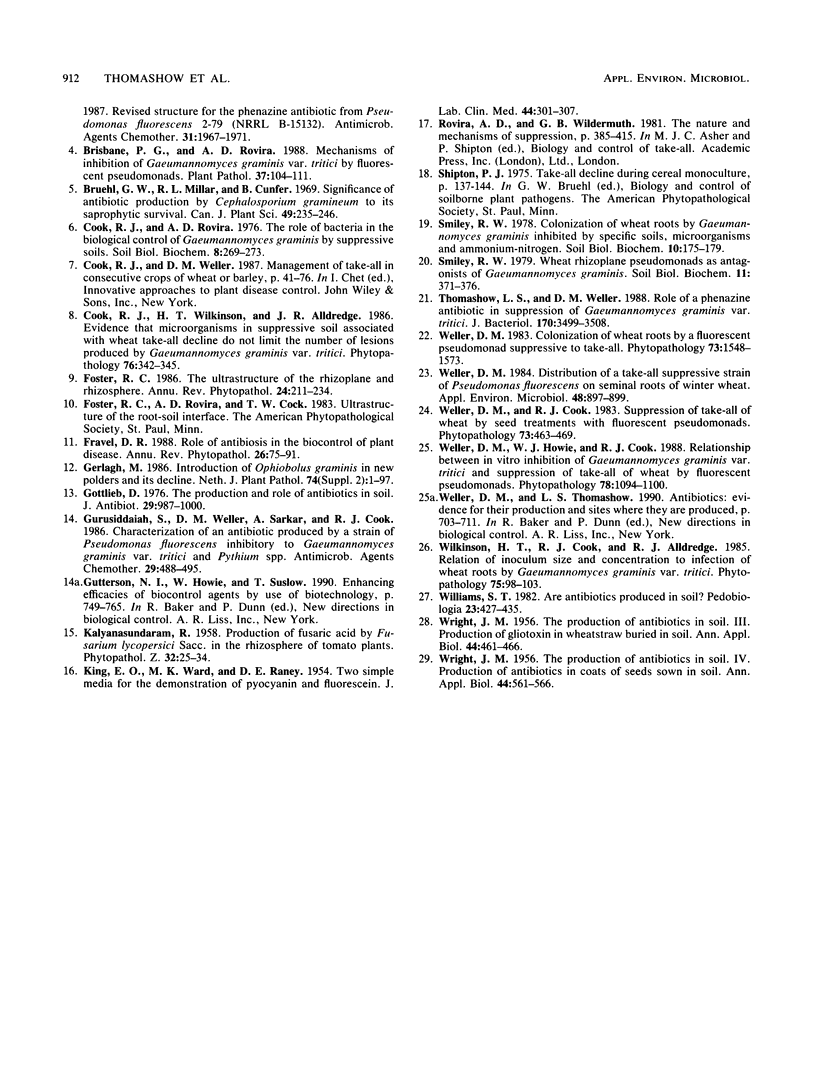
Selected References
These references are in PubMed. This may not be the complete list of references from this article.
- Gottlieb D. The production and role of antibiotics in soil. J Antibiot (Tokyo) 1976 Oct;29(10):987–1000. doi: 10.7164/antibiotics.29.987. [DOI] [PubMed] [Google Scholar]
- Gurusiddaiah S., Weller D. M., Sarkar A., Cook R. J. Characterization of an antibiotic produced by a strain of Pseudomonas fluorescens inhibitory to Gaeumannomyces graminis var. tritici and Pythium spp. Antimicrob Agents Chemother. 1986 Mar;29(3):488–495. doi: 10.1128/aac.29.3.488. [DOI] [PMC free article] [PubMed] [Google Scholar]
- KING E. O., WARD M. K., RANEY D. E. Two simple media for the demonstration of pyocyanin and fluorescin. J Lab Clin Med. 1954 Aug;44(2):301–307. [PubMed] [Google Scholar]
- Thomashow L. S., Weller D. M. Role of a phenazine antibiotic from Pseudomonas fluorescens in biological control of Gaeumannomyces graminis var. tritici. J Bacteriol. 1988 Aug;170(8):3499–3508. doi: 10.1128/jb.170.8.3499-3508.1988. [DOI] [PMC free article] [PubMed] [Google Scholar]
- Weller D. M. Distribution of a Take-All Suppressive Strain of Pseudomonas fluorescens on Seminal Roots of Winter Wheat. Appl Environ Microbiol. 1984 Oct;48(4):897–899. doi: 10.1128/aem.48.4.897-899.1984. [DOI] [PMC free article] [PubMed] [Google Scholar]


